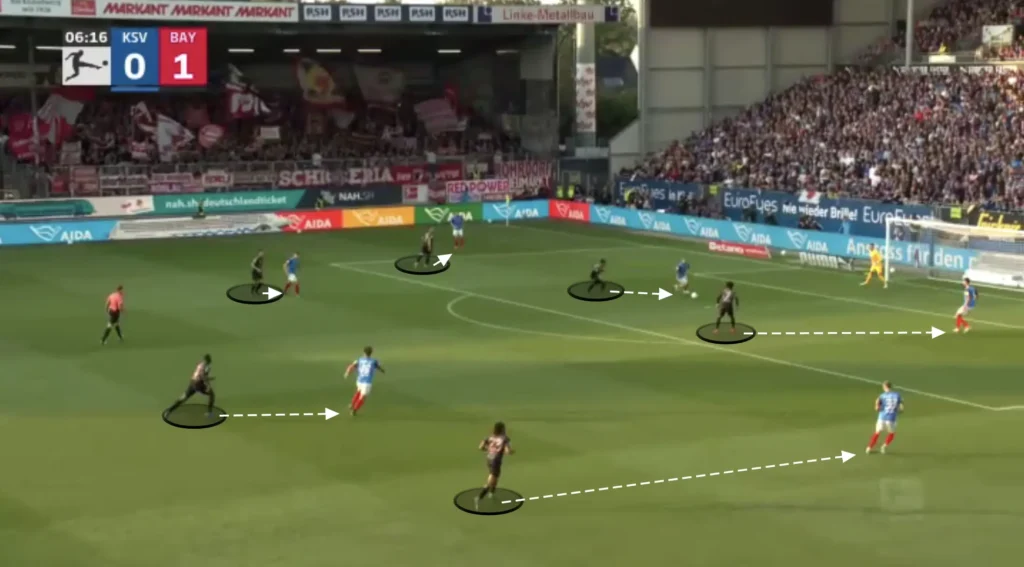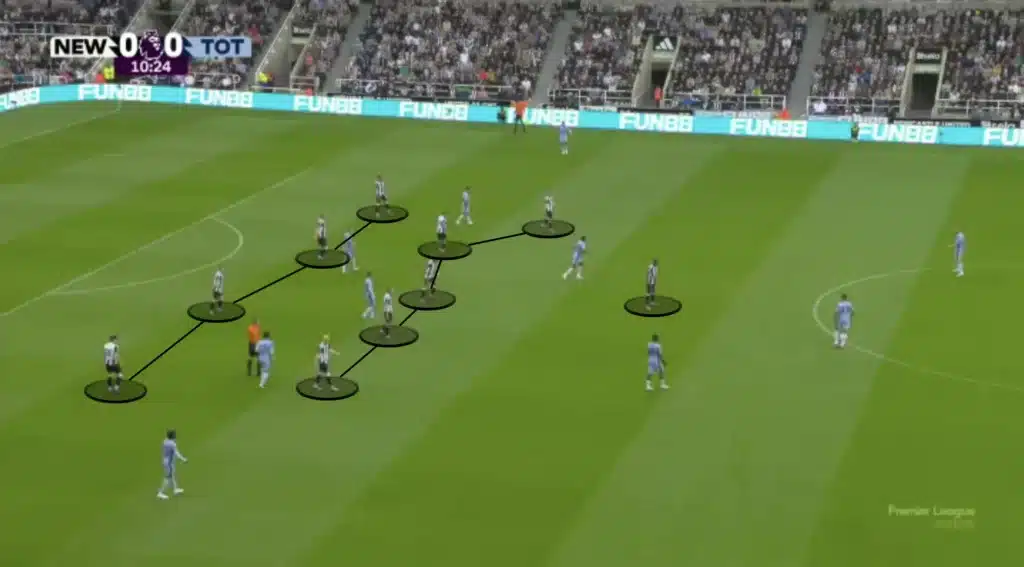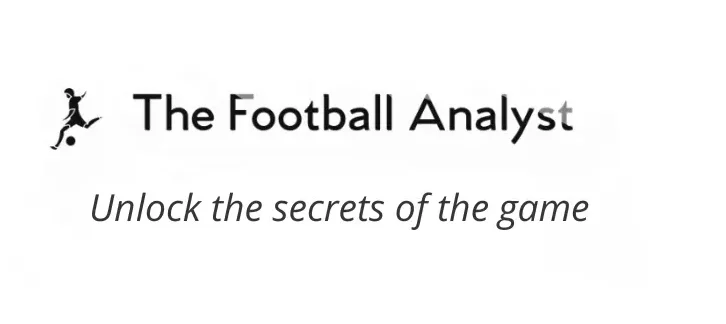In the modern tactical landscape of football, few stylistic clashes are as common or as strategically rich as the contest between a high press and a low-block. These two defensive approaches represent opposite ends of the tactical spectrum—one aggressive and front-footed, the other conservative and compact. Yet both are highly effective when executed correctly and have led teams to domestic and European success.
This article breaks down each style in depth: what they are, how they work, when they’re used, and what kinds of players and teams best suit them.
What is a High Press?
The high press is a proactive, high-risk defensive strategy that involves aggressively pressing the opponent in their own half—often as soon as they begin building up from the back. It is closely associated with modern “intensity” football and seeks to win the ball close to the opponent’s goal.

Tactical Objectives:
- Regain possession high up the pitch
- Prevent the opponent from establishing controlled possession
- Force mistakes through pressure and reduce time on the ball
- Trap the opponent in predetermined pressing zones
Tactical Mechanics:
A successful high press involves more than just running at the ball. It requires:
- Pressing triggers (e.g., a poor first touch, a back pass, or a sideways pass under pressure)
- Zonal pressing patterns designed to steer the opponent into congested zones
- Compactness between lines, minimizing gaps that the opponent can exploit
- Front-to-back cohesion, so the team moves as a unit
Variations of the High Press:
- Man-oriented pressing: Individual players track opponents closely to restrict passing options.
- Ball-oriented pressing: The team shifts collectively toward the ball side, crowding out space.
- Trap-based pressing: Luring the opponent into a perceived safe area before springing pressure.
Advantages of the High Press:
- Creates immediate attacking opportunities after ball recovery (counter-pressing)
- Disrupts opposition rhythm and build-up
- Keeps the game in the opponent’s half, asserting territorial dominance
- Can demoralize less confident or less technically gifted teams
Disadvantages of the High Press:
- Susceptibility to long balls over the top or quick diagonal switches
- Leaves large spaces behind the defensive line
- Physically demanding—requires high fitness and concentration levels
- Breakdowns in pressing coordination can lead to easy breakthroughs
Teams and Coaches Known for High Pressing:
- Jürgen Klopp’s Liverpool: Pioneered intense counter-pressing to dominate possession and territory.
- Marcelo Bielsa’s Teams: High-octane pressing with man-to-man principles.
- Pep Guardiola’s Manchester City (early phases): Press high to immediately regain control after possession loss.
- RB Leipzig under Ralf Rangnick and Julian Nagelsmann: Compact high pressing with vertical transitions.
What is a Low-Block?
The low-block is a reactive defensive approach in which a team defends deep in their own half, often close to their own penalty area. The focus is on protecting the central zone, denying space between the lines, and waiting for opportunities to counterattack.

Tactical Objectives:
- Reduce the risk of conceding by minimizing space behind the defensive line
- Force the opponent into wide or low-percentage shooting areas
- Slow the game down, frustrate the attacking team
- Launch quick transitions from deep positions when possession is regained
Tactical Mechanics:
- Deep defensive line, often just outside the penalty area
- Horizontal compactness, narrowing space between fullbacks
- Vertical compactness, reducing gaps between midfield and defense
- Often organized in a 1-4-5-1, 1-5-4-1, or 1-4-4-2 block
- One or two fast forwards left high to launch counters
Variations of the Low-Block:
- Passive low-block: Focuses purely on containment with minimal pressing.
- Active low-block: Drops deep but still applies selective pressure or triggers to win the ball.
- Hybrid block: Alternates between mid-block and low-block depending on game state or opposition zones.
Advantages of the Low-Block:
- Protects central and most dangerous zones
- Ideal against technically superior opponents
- Easier to organize for teams with less pressing intensity or fitness
- Fewer gaps left for the opponent to exploit
Disadvantages of the Low-Block:
- Cedes large amounts of possession and territory
- Hard to transition to attack without fast or technical attackers
- Relies heavily on concentration and defensive discipline
- Vulnerable to sustained pressure, long-range shots, and crosses
Teams and Coaches Known for Low-Blocks:
- Diego Simeone’s Atletico Madrid: Masters of compactness, vertical cohesion, and deep defending.
- José Mourinho’s Inter (2010) and recent Roma teams: Tactically disciplined and ruthless on the counter.
- Portugal under Fernando Santos: Conservative setup, especially in tournament knockout stages.
- Relegation-threatened teams in elite leagues: Often use low-blocks as an equalizer against stronger teams.
High Press vs Low Block – Head-to-Head Comparison
| Tactical Aspect | High Press | Low-Block |
|---|---|---|
| Defensive Line | High | Deep |
| Line of Engagement | Opponent’s third | Own third |
| Compactness | High up the pitch | Deep and narrow near penalty area |
| Risk Profile | High risk, high reward | Low risk, low reward |
| Possession | Often used with high possession | Often concedes possession |
| Main Weakness | Space in behind | Sustained pressure, long-range shots |
| Best Against | Teams that build from the back slowly | Dominant, possession-heavy teams |
| Requires | Fitness, pressing structure, courage | Discipline, positional awareness |
| Transition Threat | After ball recovery in advanced areas | Counterattacks from deep |
Which Style Should a Team Use?
The answer depends on multiple factors:
- Squad Profile: Do your players have pace, pressing intelligence, and stamina? Or are they more suited to deep defending and counterattacks?
- Opponent Quality: Against elite ball-playing teams, a well-structured low-block might be more viable. Against weaker or disorganized teams, a high press can suffocate them.
- Game State: A team leading late in a match may switch to a low-block; a team chasing a goal may adopt a higher press.
- Club Philosophy and Identity: RB Leipzig, for instance, are built for vertical pressing football, while Atletico Madrid are built to absorb and counter.
The most tactically flexible teams, like Manchester City or Real Madrid, can fluidly switch between pressing high and defending deep depending on the situation.
Final Thoughts
At the heart of both strategies is a fundamental question: where do you want to defend? The high press answers, “as far from goal as possible.” The low-block answers, “as close to goal as necessary.” Each strategy is valid, and both have led to historic success.
The high press thrives on aggression, chaos, and compactness high up the pitch.
The low-block relies on structure, patience, and calculated counterattacks.
Rather than seeing them as opposites, coaches and analysts increasingly see them as tools—used selectively depending on game context. The best teams blend them, adapt them, and know when to apply each one.
